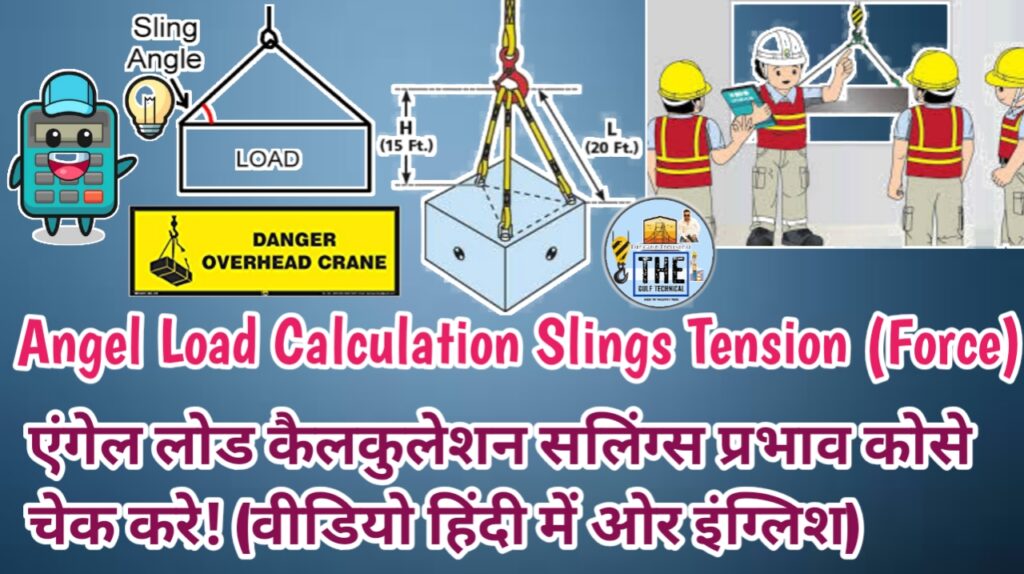A rigger is a competent person who usually works on buildings, oil and gas, industry, power plants, chemical plants, work shops, petrochemical plants, or maintenance sites. Their primary duties and responsibilities include loading, unloading, shifting, erection, and moving equipment or cranes, crawler cranes, mobile cranes, tower cranes, and freight between locations while utilizing levers, pulleys, cables, chain blocks, lever hoists, and slings.
You can improve your chances of winning the job by preparing some lifting and rigging interview questions that will help you convey your experience to the interviewers. We cover background, in-depth, and general rigger interview questions in this article. Examine more interview questions and basic responses, as well as offer some helpful advice to help you get ready for the interview.
What are the responsibilities of a rigger?
A rigger is someone skilled in rigging and lifting and moving heavy objects, often using equipment like cranes, crawler, tower crane, derricks, or chain hoists, chain block, lever hoist, shackle, slings, chain sling.
What is bull rigging?
Bull rigging is a method or system used where traditional means of load handling, such as mobile crane or overhead cranes, tower crane, cannot reach (think tight-quartered plant environments). Learn the basics, from equipment to applications, and more from this webinar!
What is basic rigging and slinging?
Slinging is the process of rigging and lifting and carrying heavy loads using (Tagline) wire rope slings, web slings, metal mesh slings, bow shackle, D-shackle, ropes, chains, and mechanical devices.
Basic Rigging: The selection and inspection of lifting gear Slings connect the load to the lifting device. Slings can be made from chain, wire rope, metal mesh, or natural and synthetic materials.
What are rigger and slinger’s?
Rigger and Slinging: When it comes to crane lifts, Rigger and riggers have different roles. Rigger apply slinging techniques for lifting purposes. This includes directing the crane operator’s load movements and ensuring safety.
Who is a licensed competent-rigger?
A licensed competent rigger can select and inspect lifting gear, apply slinging techniques, and direct the crane or hoist operator in load movement.
What are lifting and rigging?
Rigging encompasses the design and installation of equipment for the preparation of moving objects. A team of riggers designs and installs lifting or rolling equipment, like cranes or blocks and tackles, to lift, roll, slide, or move objects.
What is the difference between SWL and WLL?
SWL (Safe Working Load): The maximum load specified by the manufacturer for safe operation. It represents the load that a lifting device can handle, well below the breaking load (MBL). Calculating SWL or WLL involves dividing the MBL by a safety factor (SF).
What are the (05) main point causes of crane accidents?
As per OSHA’s analysis of crane accidents, the 05 major causes are:
- Contact with energized power lines (about 45% of cases)
- Crane or boom contact with other objects
- Overturned cranes
- Dropped loads from cranes
- Bad rigging practice
Upside-down cranes.
Load dropped.
Rapid descent.
Crushed by counterweight.
What is character-rigging?
Character rigging is a complex process that requires creativity, precision, and attention to detail. Character riggers are responsible for using computer programs to create a series of bones for the skeleton, turning them into a rig that deforms and animates specific parts of the character.
What can a basic rigger do?
Rigger License. (TUV) In rigging work, the use of mechanical load-shifting equipment and associated gear for the movement, placement, or securing of loads within or as part of a structure, plant, or rigging system is included. This also involves the installation or removal of cranes or hoists.
What is a rigger ticket?
Rigger involves two main aspects: the use of slinging techniques employed for lifting operations (including the selection and inspection of lifting gear) and the direction given by a Rigger or crane operator when a load is out of the operator’s direct line of sight.
How does the weight lifted by a crane affect it?
The equipment crane’s maximum lifting capacity is 18 metric tons (39,690 pounds). However, if the load is at the far end of the fly jib, the crane cannot lift as much weight. Keeping the load closer to the mast allows the crane to lift more weight safely. The 300-ton-meter rating indicates the crane’s capacity.

What is the function of a machinist’s mate?
A machinist’s mate, also known as a machinist or mechanic, is an individual responsible for assisting work crews and providing support for equipment and materials during the constructions site, maintenance, and repair of buildings, bridges, and other human-made structures.
What is the definition of buoyant force?
The buoyant force in fluid mechanics, such as in a river, lose sand and soil ground is the force exerted by the fluid’s flow, lifting the sediment on the riverbed. Buoyant force typically includes small particles like clay, silt, and fine sand.
How do tower cranes stay balanced?
Most tower cranes achieve this through counterweight technology. Essentially, on the opposite side of the crane’s jib, there is a large counterweight. It acts like a seesaw to maintain balance. The counterweight’s position can be adjusted forward or backward to make the effect of the counterweight more or less significant.
What qualifications do you need to become a rigger?
Experience: To become a competent rigger, a 10th grade pass is included in your experience, but this is not mandatory for the rigging work of a lot of workers without education and service in rigging and lifting. Practical skills in rigging work obtained through real-life rigging tasks are essential. Qualification: For working as a rigger, most companies require you to have an TUV Card or LEEA rigging qualification. At that point, you may need to work under supervision as a trainee.
What makes a qualified rigger?
According to OSHA, a qualified rigger is defined as someone who possesses a degree (any diploma category can apply), a certificate, or professional standing. has extensive knowledge, training, and experience. can demonstrate their qualifications successfully.
1. What are the three main types of rigging systems?
The three fundamental types of rigging systems are:
Supported Rigging: Consists of one or more platforms supported by outer girder beams, brackets, poles, legs, uprights, posts, frames, or similar rigid support structures.
2. What is the purpose of a toe board on a rigging structure?
The purpose of a toe board is to prevent objects, tools and tackles, and equipment from falling off the edge protection or colliding with the rigging structure. Whenever a railing is used, applying a toe board is the best practice to avoid the risk of objects or tools falling from the edge.
3. What is the difference between SWL and WLL?
SWL, or Safe Working Load, limit is the maximum load specified by the manufacturer. It represents the loads that lifting equipment can safely handle without causing failure or creating a breaking load, also known as the Minimum Breaking Load (MBL). SWL, or WLL, is calculated by dividing MBL by a safety factor (SF).
4. Types of sling and lifting tackle safety factor:
Web slings safety factor. (7.1-6.1-5.1) Best factor (7.1)
Wire rope slings safety factor. (5.1)
Chain block safety factor. (4.1)
Bow-shackle D-shackle safety factor. (6.1)
5. What does WLL mean in rigging?
WLL stands for Working Load Limit. It is the maximum acceptable load that a piece of rigging equipment can safely any lift, sometimes referred to as “rated load” or “rated capacity.”
6. What does SWL mean?
SWL stands for Safe Working Load. It is the maximum safe force that lifting equipment’s, lifting gear, or a structure can handle without risk of failure.
7. What are rigging and lifting?
Rigging encompasses both a noun, referring to tools and devices like wire ropes, turnbuckles, clevises, and jacks, and a verb, which involves designing, AutoCAD drawing, and installing equipment for material handling and the relocation of structures. Rigging and method department teams design and install lifting or rolling equipment necessary for lifting, rolling, sliding, or relocating objects using cranes or blocks.
8. What is heavy rigging?
A heavy rigging lifting supervisor and competent person involves the design and installation of lifting or rolling equipment by rigging teams working with cranes and other lifting devices. They guide crane operators in moving and depositing large and heavy objects correctly.

Types of lifting:
1. Simple lifting or general lifting Up to 1 ton to 10 tons
2. Heavy lifting More than 20 tons to 30 tons more
3. Critical lifting critical, lifting more points:
most important of critical lifting.
1. Using two cranes at the same time, a load lift
2. Lifting over-line facilities under ground utilities
3. Above 75% overutilization calculation: lifting plan
4. Tandem Lifting, Tailing Lifting

